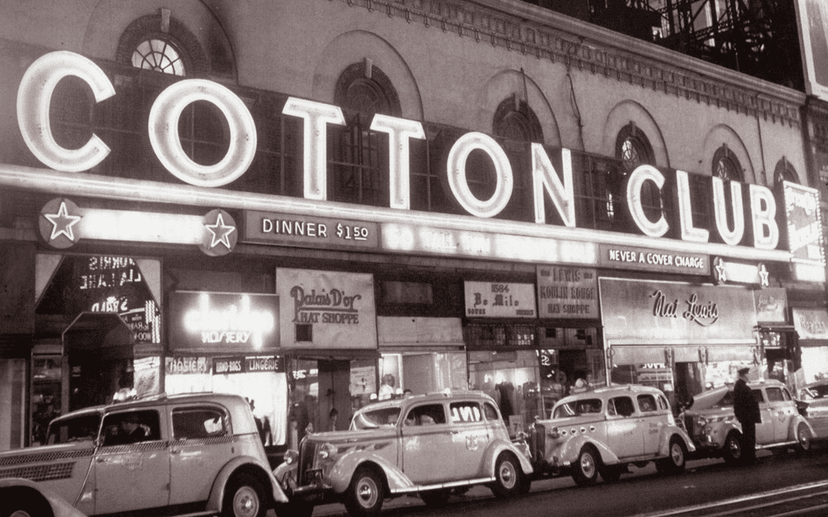The Harlem Renaissance
The Harlem Renaissance was an era in the 1920’s and 1930’s that took Place in Harlem, New York. Over 60% of Harlem is populated by African American and Hispanic people. During this time there was a lot of music, poetry, literature, performances and activism involved with this era. This era was widely known as a rebirth of African American arts. Some icons of this time period were Langston Hughes, Zora Hurston and W.E.B Dubois.

The Cotton Club
The Cotton Club featured entertainers such as Count Basie, Duke Ellington, and Louis Armstrong. It was previously used to sell beer during the prohibition era, before opening for black customers in 1935, and being shut down in 1940.

Duke Ellington
After starting off in Washington D.C., Ellington made it big in New York City by performing in the previously mentioned Cotton Club along with his orchestra. He was an extremely talented jazz composer, considered by many to be one of the most important to the genre.

Langston Hughes
Moving to Harlem in 1926 at the age of 25, Hughes made a name for himself as a poet, and also wrote nonfiction works, short stories, newspapaer columns for The Chicago Defender, and even wrote plays at times.

W.E.B. Du Bois
Including founding and editing The Crisis, a publication by the NAACP, Du Bois was an extremely prolific author, whose catalog included works like The Souls of Black Folk, and Black Reconstructionism in America. He was also the first African American to receive a PHD from Harvard University.

The Weary Blues
The Weary Blues is a 1925 poem by the poet Langston Hughes. It was published in the Academic Journal Opportunity: A Journal of Negro Life, and subsequently won the magazine’s award for best poem of the year.

The Crisis
The Crisis is a quarterly magazine published by the NAACP. In publication since 1910, it is the oldest African-American oriented publication in the world. During the Harlem Renaissance, the magazine began to orient itself towards literary works much more, publishing writings by the likes of Claude McKay, Zora Neale Hurston, and Gwendolyn Bennett.

Claude McKay
The Jamaican–American writer McKay first moved to America early in his life and encountered the W.E.B. Du Bois work The Souls of Black Folk, and subsequently wrote If We Must Die, a poem published in The Liberator magazine, and that is described as one of the most famous poetic works of all time.

Zora Neale Hurston
Zora Neale Hurston was a novelist, playwright, folklorist, and anthropologist. She was born in Eatonville, Florida and lived from 1891-1960. She moved to Harlem in 1925 and there she found other people, writers and intellectuals, like her. She wrote about the struggles of African Americans living in the 1800s south. Her first novel was published in 1934, it was called Jonah’s Gourd Vine.

William Grant Still
William Grant Still was mainly a composer but also an arranger and conductor. He stopped pursuing his medical studies to become a musician instead. He taught himself to play many instruments including the violin, cello, oboe, saxophone, and many more. Which led the way to him becoming a famous composer. He became the first African-American composer to write a symphony performed by Americans.